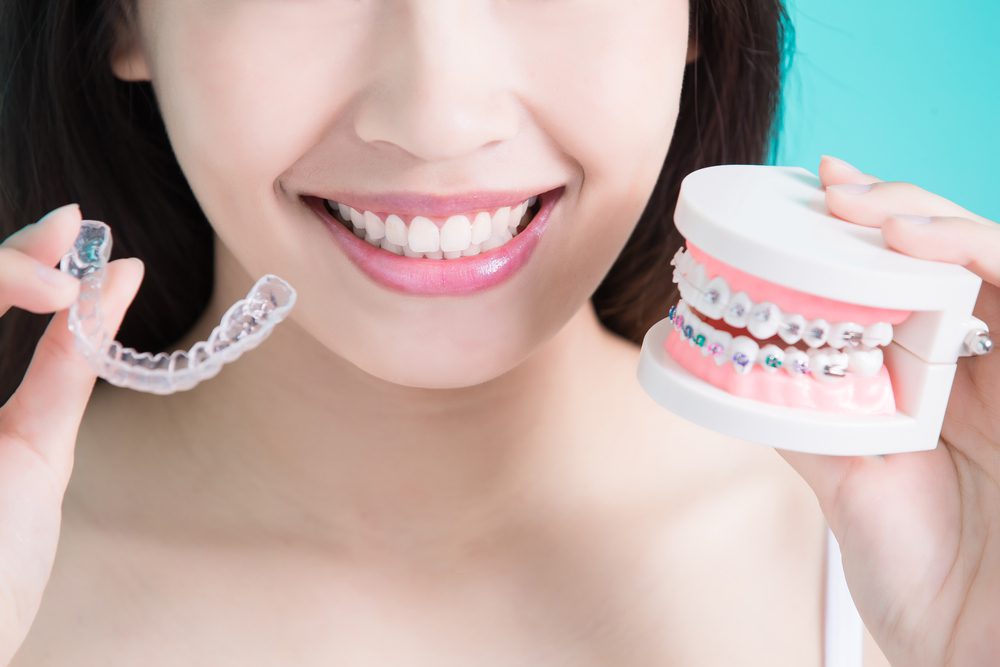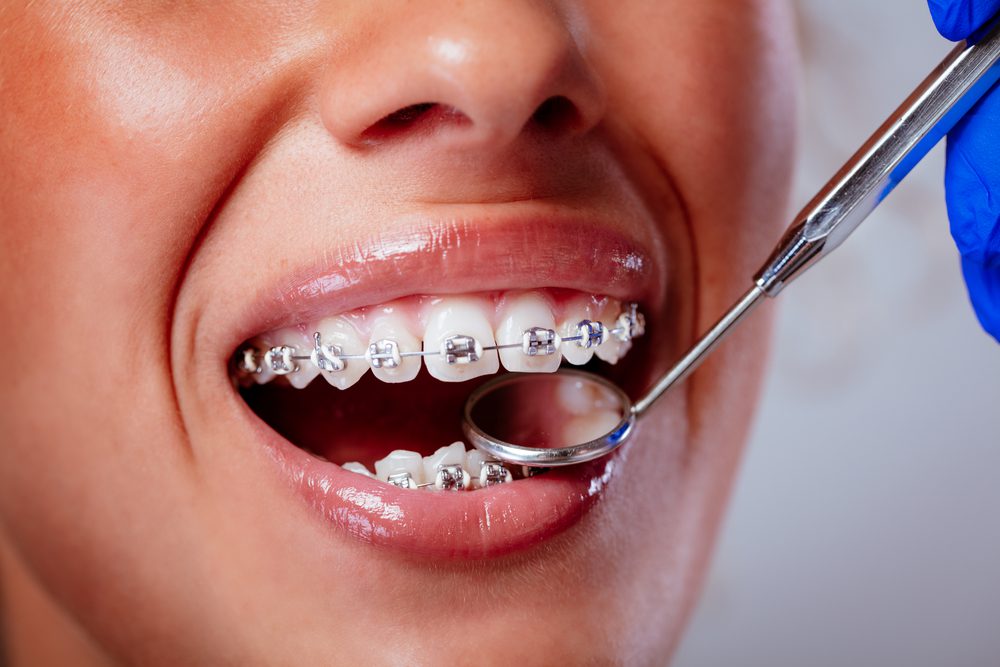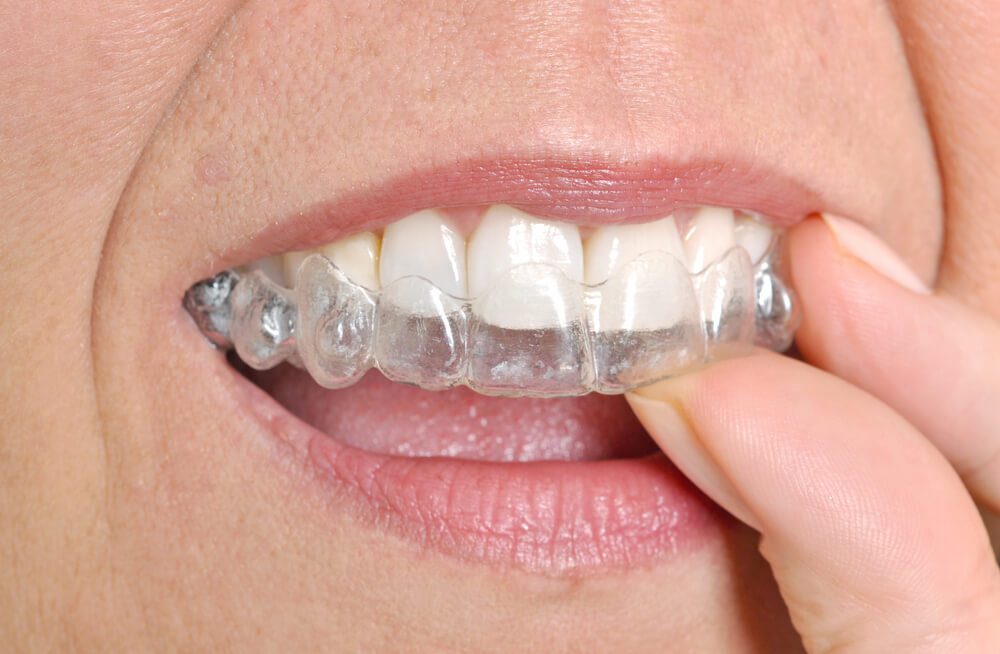Posted on September 29, 2023

Are you considering getting braces but feel overwhelmed by the different options available? Choosing the right type of braces can have a significant impact on your orthodontic journey. With various types of braces to choose from, it’s important to understand their differences and benefits before making a decision.
Straightening teeth and correcting bite issues have become more accessible and aesthetically pleasing with advancements in orthodontic technology. Gone are the days when traditional metal braces were the only option. Now, patients have a range of alternatives to suit their preferences and lifestyle.
When it comes to braces, one size does not fit all. Each type has its own set of advantages and considerations, making it crucial to choose the one that aligns with your specific needs.
To help you make an informed decision, we’ll explore the different types of braces available and discuss their suitability based on factors such as comfort, visibility, and treatment duration.
Whether you’re a teenager or an adult seeking orthodontic treatment, understanding the options will empower you to choose the best braces for you.
Choosing the right type of braces is crucial for anyone who needs orthodontic treatment. Braces play a significant role in correcting misaligned teeth, overcrowding, and bite issues. There are different types of braces available, such as traditional metal braces, ceramic braces, lingual braces, and clear aligners like Invisalign.
Each type has its advantages and disadvantages, and the choice depends on various factors such as the severity of the misalignment, personal preferences, lifestyle, and budget. Consulting with an experienced orthodontist is essential to making an informed decision about the most suitable type of braces for individual needs.
The right type of braces not only ensures effective treatment but also enhances comfort, aesthetics, and overall oral health.
Traditional metal braces are a type of orthodontic treatment that straightens teeth using metal brackets and wires. These braces are typically made of stainless steel and are attached to the front surface of the teeth.
The brackets are connected by archwires that apply gentle and consistent pressure to gradually move the teeth into their desired positions. Traditional metal braces are one of the most common and effective methods for correcting misaligned teeth and bite issues.
Metal braces are a popular orthodontic option, known for their effectiveness in treating a variety of dental misalignments. Below, we explore both the advantages and disadvantages of choosing this method for achieving a healthier, more aligned smile.

When considering metal braces, it’s essential to weigh these pros and cons carefully. They offer a reliable and effective solution for complex dental alignments but come with aesthetic and maintenance considerations that might impact your daily life. Always consult with an orthodontic specialist to ensure that you choose the best option tailored to your individual needs and circumstances.
Traditional metal braces are suitable for individuals who have more complex dental issues, such as severe overcrowding, significant misalignment of teeth, or bite problems. Additionally, traditional metal braces may be recommended for patients who may not be compliant with other types of orthodontic treatments.
Each of these brands offers distinct features and benefits, making them suitable for a variety of dental alignment needs.
Ceramic braces are a type of orthodontic braces that are made from a clear or tooth-colored ceramic material. They are designed to be less noticeable than traditional metal braces.
Ceramic braces work in a similar way to metal braces, using brackets and wires to gradually straighten the teeth. They are a popular choice for individuals who want a more aesthetically pleasing option for orthodontic treatment.
Ceramic braces are suitable for individuals who want a more discreet option for orthodontic treatment. They are a good choice for those who desire the benefits of traditional braces but prefer a less noticeable appearance. Ceramic braces blend in with the natural color of teeth, making them a popular choice for adults or individuals who are self-conscious about wearing braces.
Ceramic braces are suitable for individuals with mild to moderate tooth misalignment or bite issues that can be corrected with traditional braces. However, it is always best to consult with an orthodontist or dental professional to determine the most suitable treatment option for an individual’s specific needs.
Lingual braces are a type of orthodontic treatment that is placed on the backside of the teeth, making them invisible from the front. They work similarly to traditional braces, using brackets and wires to gradually straighten the teeth and correct alignment issues.
Lingual braces are a popular option for individuals who want to improve their smile without the braces being noticeable. However, they can be more challenging to clean and adjust compared to traditional braces.
Lingual braces are suitable for individuals who want to straighten their teeth but prefer a more discreet treatment option. They are specifically designed for those who may feel self-conscious about wearing traditional braces as they are placed on the inside surfaces of the teeth, making them virtually invisible to others.
Lingual braces are suitable for individuals with mild to moderate dental misalignment or irregularities. However, it is important to consult with an orthodontist to determine if you are a suitable candidate for lingual braces based on your specific oral health needs and goals.
Lingual braces are a popular choice for those seeking orthodontic treatment without the visibility of traditional braces. Several brands have developed their versions, each with unique features:
Each brand offers different advantages, catering to the specific needs and preferences of patients. Whether you prioritize comfort, speed, or aesthetics, there’s an option available in the world of lingual braces.
Invisalign is a type of orthodontic treatment that uses clear aligners to straighten teeth. It is a popular alternative to traditional metal braces as the aligners are virtually invisible, removable, and comfortable to wear. Invisalign works by gradually shifting the teeth into their desired positions through a series of custom-made aligners.
These aligners are typically changed every few weeks to continue the teeth straightening process. Invisalign can be a great option for individuals seeking a more discreet and convenient way to achieve a straighter smile.

Invisalign is suitable for individuals who are looking to straighten their teeth and improve their smile without the use of traditional braces. It is a popular option for both teenagers and adults who want a more discreet and comfortable teeth-straightening experience.
Invisalign is particularly beneficial for those with mild to moderate dental alignment issues such as crowded teeth, gaps, or overbites. However, it is important to consult with a qualified orthodontist or dentist to determine if Invisalign is the right treatment option for your specific dental needs.
Self-ligating braces are a type of orthodontic treatment that is commonly used to straighten teeth and correct misaligned bites. Unlike traditional braces that use elastic bands or metal ligatures to hold the wires in place, self-ligating braces have special clips or brackets that securely hold the wires. This system not only simplifies the adjustment process during treatment but also reduces the overall treatment time.
These braces stand out because they use doors or clips instead of the elastic rubber ties found in conventional metal or ceramic braces. This key difference makes the braces easier to adjust, potentially leading to shorter and less frequent appointment times.
Self-ligating braces also offer more comfort, as there are no elastic ties that can cause discomfort or trap food particles. They are easier to clean, resulting in better oral hygiene throughout the treatment process. Overall, self-ligating braces provide a more efficient and convenient way of achieving a beautiful, straight smile.
Self-ligating braces are suitable for individuals of all ages who require orthodontic treatment. They are particularly beneficial for those with crowded or crooked teeth, gaps between teeth, and bite issues.
It is often recommended for people who prefer a more discreet orthodontic option, as they are smaller and less visible compared to traditional braces. However, it is always best to consult with an orthodontist to determine if self-ligating braces are the most suitable treatment for your specific dental needs.
Moreover, self-ligating braces are an excellent choice for patients who are sensitive to discomfort and those who find it challenging to remain still during dental appointments. They are also beneficial for patients with developmental delays who have orthodontic needs, providing a less stressful experience due to the ease of adjustments and reduced time spent in the dentist’s chair.
By combining advanced technology with patient-centered design, self-ligating braces offer an effective, efficient, and aesthetically pleasing solution for achieving a healthier, more aligned smile.
Navigating the world of orthodontics can be overwhelming with the array of braces available. Whether it’s the traditional metal braces, discreet ceramic ones, lingual braces hidden behind your teeth, or the popular clear aligners, each type caters to different needs and preferences. Making the right choice can influence not just the aesthetics but also the treatment duration and comfort.
At Smilebliss, we believe in tailoring the orthodontic experience to each individual. Our team of experts will guide you through the options, weighing the pros and cons, to help you choose the braces that fit your lifestyle and aspirations.
With Smilebliss by your side, your journey to a dream smile becomes simpler and more rewarding. Keep in touch with us now!
Are you considering orthodontic treatment? At Smilebliss, we are excited to offer personalized care using the latest technology. Our services range from early treatments for children to complex solutions for adults, including discreet esthetic options like lingual braces, which are hidden behind the teeth.
Here’s how you can schedule a consultation with us:
Take the first step towards a beautiful smile by scheduling your consultation today and meeting with our orthodontic experts. We’re here to guide you through every step of your orthodontic journey.